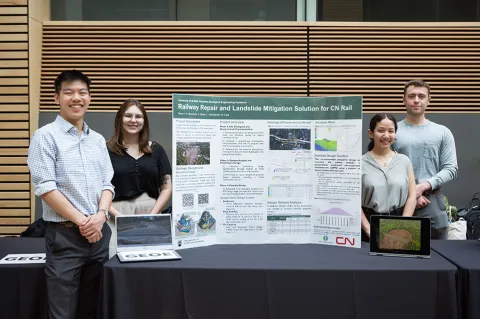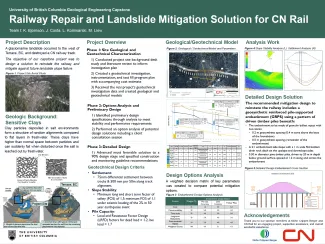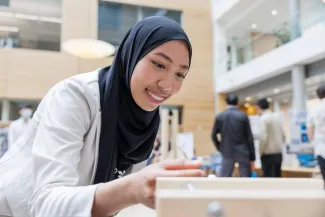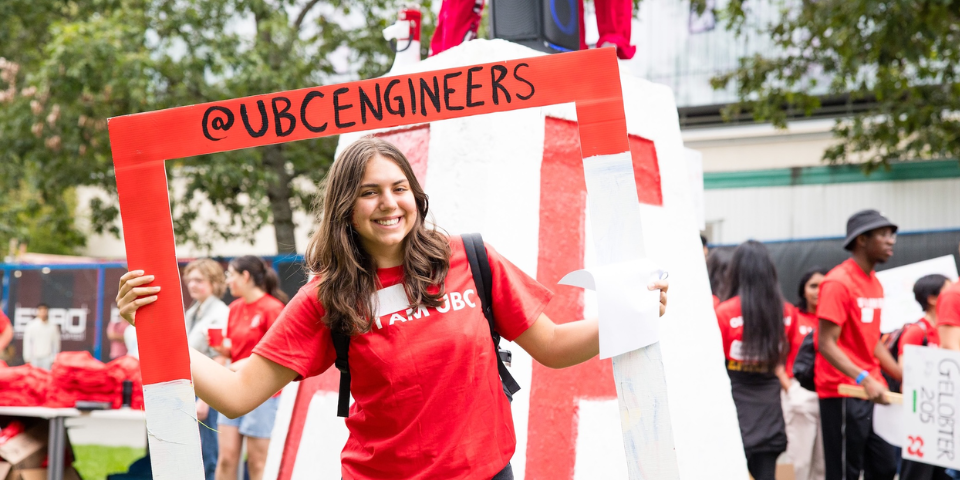
Katrijn Bjornson, Julia Costa, Luke Komisarski and Matthew Liew
- Community Partner: Klohn Cripper Berger and CN Rail
- Degree:
- Bachelor of Applied Science
- Program:
- Campus: Vancouver
Our design solution and process
Our project basically replicated the process used by engineering consulting firm Klohn Cripper Berger (KCB) following the actual event. At the project outset, we were given some photos of the area right after the landslide occurred.
Our job was to come up with a plan to investigate the site and propose a solution to stabilize the embankment to restore the railway line and keep the area safe from future landslides.
In the first phase of this project, we designed a test fill program to learn more about the site’s geological and geotechnical characterization. This is a remote site and there wasn’t much, or any, existing data to draw from. We began by reviewing background studies, looking at geological maps and learning about the glacial and geomorphologic history of the area to ensure our proposed investigation methods were relevant for the site’s soil types and other features. We then developed a detailed test fill plan that outlined geotechnical drilling and lab testing requirements.
After we submitted our plan to KCB, they confirmed that our plan was actually very similar to the one they developed when hired to remediate this site in late 2020.
KCB then gave us the data that they acquired from their test fill plan. This data informed the next stage of our project, options analysis and preliminary design.
Our design needed to meet specific criteria for settlement, slope stability and pile capacity.
We evaluated each of our potential design solutions (pre-case pre-stressed concrete piles, lime columns and timber piles) against criteria including cost, ease of construction, long-term robustness and environmental impact. Our selected solution is a geosynthetic reinforced pile-supported embankment made of granular ballast reject.
Through our modelling process, we optimized pile diameter and depth, and we conducted a settlement and slope stability analysis.
We advanced our solution to 90% design stage, including guidelines for construction and monitoring.

What we’re most proud of
Going through an entire geotechnical project from start to end was very rewarding.
We began this project by looking at photos of the stie after the landslide and we ended with a viable remediation plan. We all learned a lot because the project encompassed so many elements.
The fact that our test fill program plan matched KCB’s approach gave us a lot of confidence in our ability to work through the steps to solve a challenging geotechnical problems.




